Catwalks and tunnels, custom built to the tune of about $35,000 keep a homeowner’s 18 cats on cloud nine
In 1988, when home builder Peter Cohen moved into his house in Goleta, California, two roaming outdoor cats came with the property. Shortly after he moved in, one was killed by a car and the other was hit by a car. This prompted Cohen to keep the surviving cat indoors. Soon after, he began rescuing cats that nobody wanted. Before he knew it, he had 18 on his hands.
After a home remodel in the 1990s, Cohen began constructing catwalks and tunnels for his feline companions. The intricate and artistic platforms and walkways allow the cats to climb, jump and crawl through the house, and they even connect to various litter boxes — 24 of them — which are concealed in closets with fans and the garage. “The house is designed not to smell, and it doesn’t,” he says.
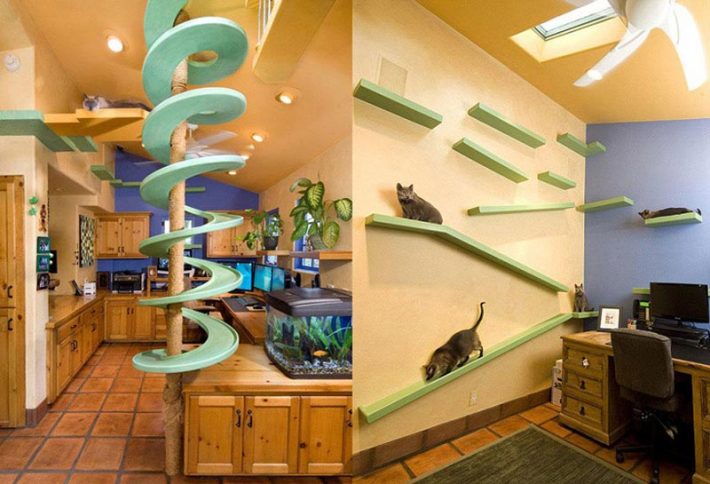
Cohen got the idea for his catwalks after picking up a mini book called The Cats’ House, by Bob Walker. “I thought, ‘I’m a builder. I could do that,’” he says. When there was downtime at his building firm, Trillium Enterprises, Cohen traded tools with carpenters and had them come to his house to design and build the additions.
In Cohen’s home office (shown here), a spiral walkway wraps around a floor-to-ceiling scratching post. His cats, all mutts, climb up the pole and walk down the spiral. “I thought maybe the cats would just look at it, but they use it all,” he says. “It’s like a freeway sometimes with them all over the place.”
The pieces have an artistic element and are painted bright colors. Some of them look just like floating shelves.
Catwalks crisscross the main bathroom. The shark’s mouth is the opening of a tunnel. The yellow platform beneath the skylight is a favorite spot for naps.
“Cats are very calming,” he says. “It’s hard to stay mad when a cat sits in your lap and purrs.”
Steps lead along the bathroom wall to a ledge above the window. The two little black squares at the base of the bathtub lead to the garage and litter boxes. More tunnels in the garage lead to the kitchen.
The cats now have two ways to get in and out of each location. In places where he originally had just a single tunnel, Cohen found that one cat would sit in the tunnel and not let the others pass. He also designed the tunnels so the cats are never more than an arm’s length away in the tunnels, and so he can clean the spaces out easily by hand.
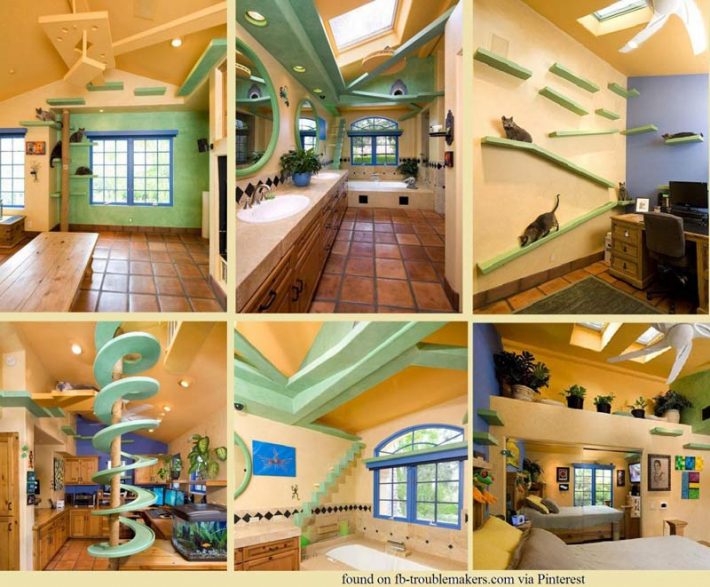
An S-shaped walkway hangs on the wall near a koi pond, which the cats use as a drinking fountain. The green square hides a tunnel that connects to Cohen’s bedroom entryway and around to another tunnel that leads to the bedroom. The tunnel opening in Cohen’s bedroom is concealed by a hippo piece; shelves and steps lead to a loft of cat beds.
The home is also a smart home, with 25 security cameras (one can be seen here on the ceiling above the door) so that Cohen can check on his cats when he’s traveling for business. From his iPhone he can also control the window shades, temperature, door locks, fireplace, music, lighting and more.
All told, Cohen says he spent about $30,000 to $40,000 since 1995 to build the catwalks. “Way more expensive than a sane person would build, but I didn’t care,” he says. “I love my cats, my house and art, so I designed it to be beautiful to me.”
In the main bedroom (Cohen shares the house with his partner and a business partner), the cats can climb another scratching post and even drop down onto a floating platform.
The interiors were off-white when Cohen moved in. When he decided to change up the home, he added his favorite colors — yellow, green and blue.
While Cohen says he’s done adopting cats for now, the catwalk project is ongoing. “We’ll never stop,” he says.
Suorce Houzz TV

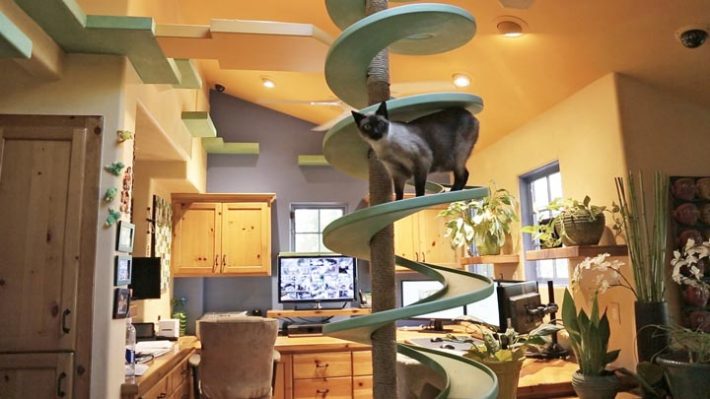

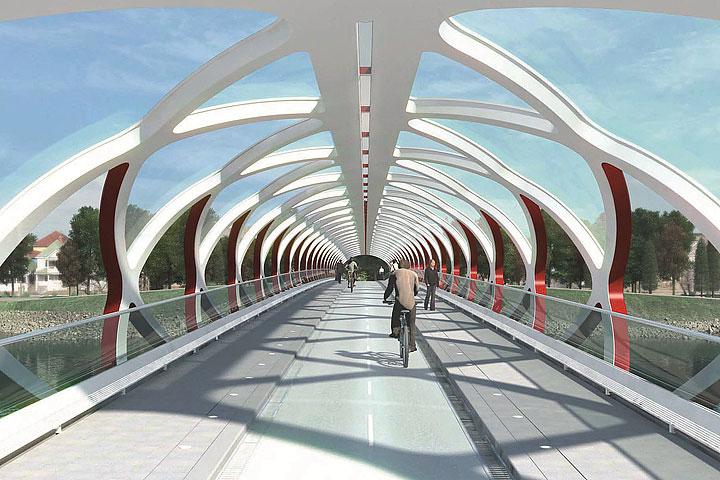
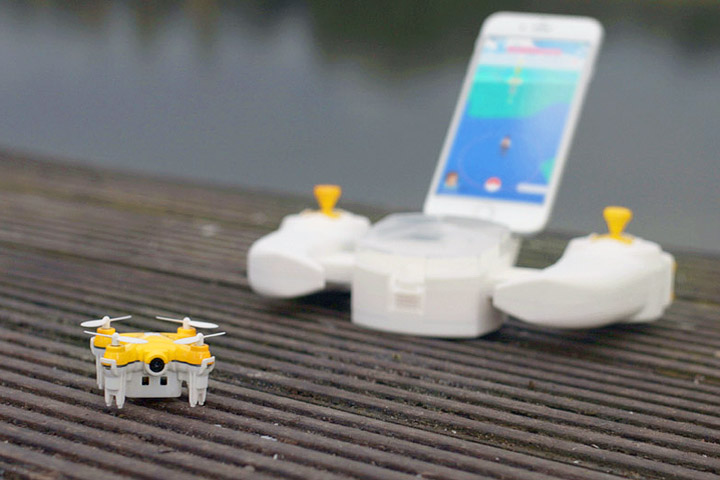
Leave a Reply